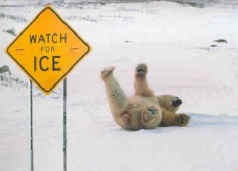College Programs in Science Writing
 Friday, May 18, 2007
Friday, May 18, 2007  I am always interested in university programs that combine science and writing. The Stevens Institute of Technology has a very unique program titled the Center for Science Writings, which was created in 2005 to "emphasize the vital importance of writing and other forms of communication to science."
I am always interested in university programs that combine science and writing. The Stevens Institute of Technology has a very unique program titled the Center for Science Writings, which was created in 2005 to "emphasize the vital importance of writing and other forms of communication to science."
With award-winning author and journalist John Horgan as Director, the CSW sponsors a number of exciting and important activities. Two of particular interest to me are a blog that "explore(s) the boundaries between science and the media", and a list of the greatest science books of the 20th century. So far there are 50 books listed, and readers are encouraged to comment and suggest other books. The CSW criteria are that the books "stand out because of their subject matter, their rhetorical style and their impact on science and the rest of culture."
The blog contains a number of interesting posts that are motivated by press reports - something that I occasionally post about here. There are also a few posts written by students, although it is not clear whether these are class assignments. I will be teaching Chaos and Fractals again in Fall 2007, and all students will soon be posting here - most likely in a separate journal on this site. The CSW blog has already given me some a source of interesting readings for my upcoming class and a possible assignment - having my students respond to some of the CSW posts.
The book list is fascinating. Along with standards that all would expect - Einsteins' The Meaning of Relativity, Kuhn's Structure of Scientific Revolutions, Dawkins' Selfish Gene, Popper's Logic of Scientific Discovery, Watson/Crick's Double Helix, etc.. - I am really glad to see that Gleick's Chaos made the list as well as Mandelbrot's Fractal Geometry of Nature. Then there other books that I probably would never have come up with, but am glad that someone did: Rachel Carson's Silent Spring, Margaret Mead's Coming of Age in Samoa, Dianne Ackerman's A Natural History of the Senses...even Oliver Sacks' The Man Who Mistook His Wife for a Hat. So be sure to check out the list, and make a suggestion or two. (Don't Panic - I see that someone has recommended Hitchiker's Guide to the Universe!)
If there are any readers out there who know of other interesting science & writing programs, please post a comment with a link.











